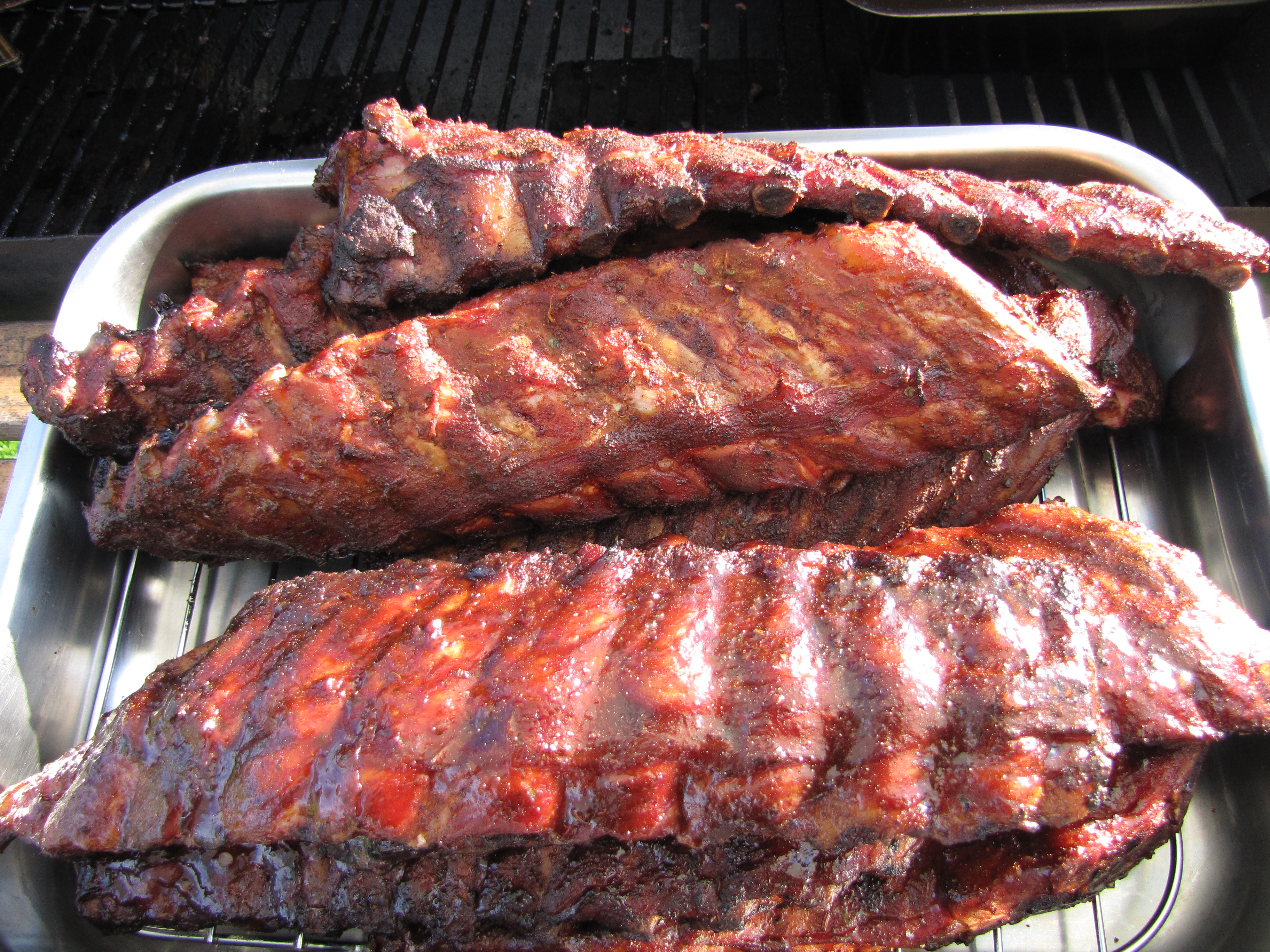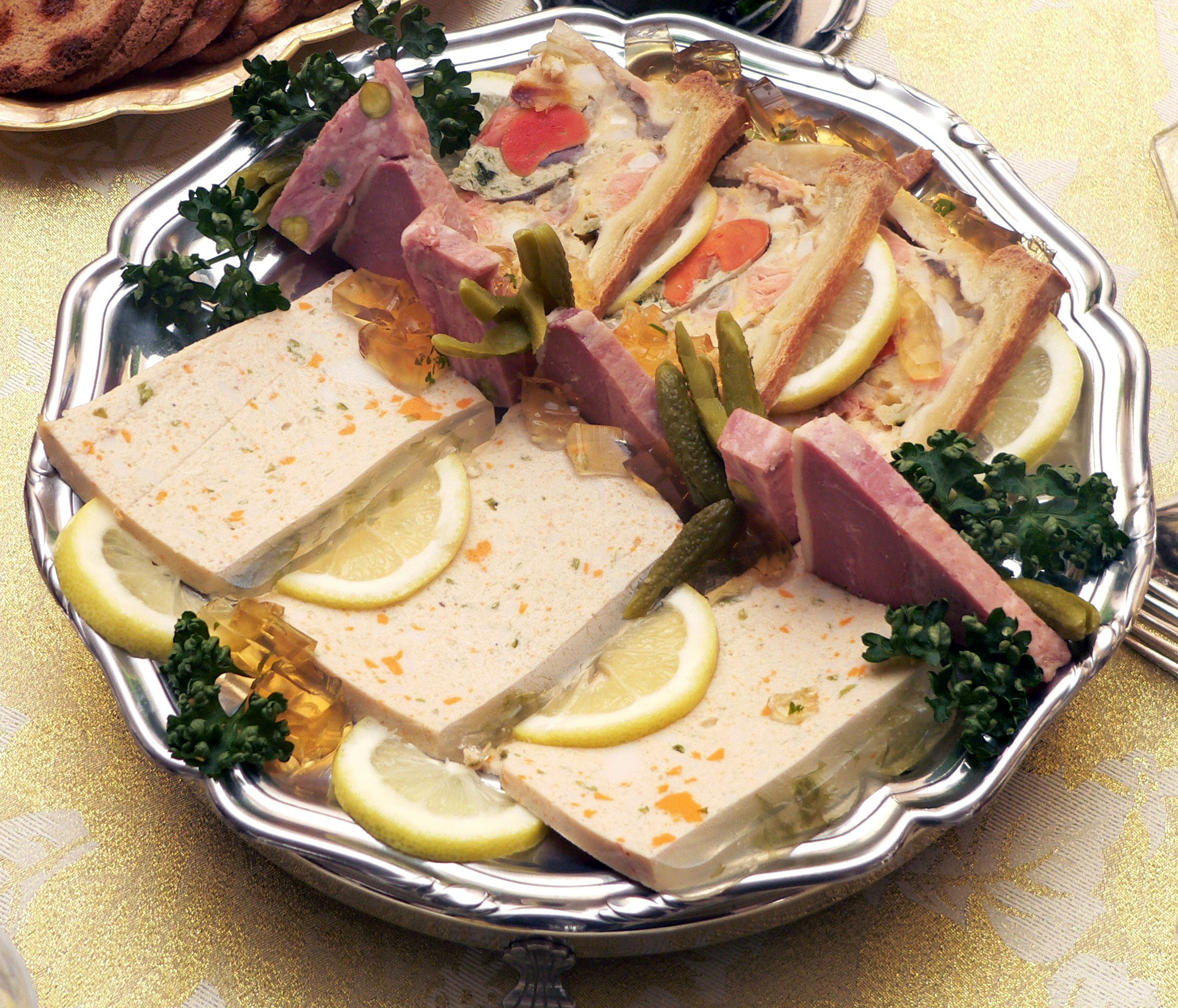|
Mavželj
''Mavželj'' (minced pork filling in net) is a national Slovene dish. It is known mostly in Slovene Carinthia and also in Upper Carniola. It is made of the soup in which the pork head was cooked, and of the remnants of the meat and the brains of the same pork head. The dish is ball-shaped and comes in various local variations. In the past, the preparation of this net wrapped ball called ''mavželjni'' was much more popular than today. Potters made special earthen baking moduls to fit their shape. The dish was mainly eaten on holidays.Taste Slovenia. Bogataj Janez, 2007. Rokus Gifts. See also * Kransky * List of pork dishes * Slovenian cuisine Slovenian cuisine () is influenced by the diversity of Slovenia's landscape, climate, history and neighbouring cultures. In 2016, the leading Slovenian ethnologists divided the country into 24 gastronomic regions. The first Slovene-language coo ... References External links Mavželj with photo {{DEFAULTSORT:Mavzelj Slovenian cuisi ... [...More Info...] [...Related Items...] OR: [Wikipedia] [Google] [Baidu] |
Slovenian Cuisine
Slovenian cuisine () is influenced by the diversity of Slovenia's landscape, climate, history and neighbouring cultures. In 2016, the leading Slovenian ethnologists divided the country into 24 gastronomic regions. The first Slovene-language cookbook was published by Valentin Vodnik in 1798. Foods and dishes Soups are a relatively recent invention in Slovenian cuisine, but there are over 100. Earlier, there were various kinds of porridge, stew and one-pot meals. The most common soups without meat were lean and plain. A typical dish is ''aleluja'', a soup made from turnip peels and a well-known dish during fasting. The most common meat soup is beef soup with noodles, which is often served on Sunday as part of a Sunday lunch (beef soup, fried potatoes, fried steak and lettuce). On feast days and holidays, there is often a choice of beef noodle soup or creamy mushroom soup. Pork is popular and common everywhere in Slovenia. Poultry is also often popular. There is a wide variety of ... [...More Info...] [...Related Items...] OR: [Wikipedia] [Google] [Baidu] |
List Of Pork Dishes
This is a list of notable pork dishes. Pork is the culinary name for meat from the domestic pig ('' Sus domesticus''). It is one of the most commonly consumed meats worldwide,Raloff, JanetFood for Thought: Global Food Trends Science News Online. May 31, 2003. with evidence of pig husbandry dating back to 5000 BC. Pork is eaten both freshly cooked and preserved. The consumption of pork is prohibited in Judaism, Islam, and some Christian denominations such as Seventh-day Adventism. In the United States, the U.S. Department of Agriculture recommends cooking ground pork, that is obtained from pig carcasses, to an internal temperature of 160 °F, followed by a 3-minute rest, and cooking whole cuts to a minimum internal temperature of 145 °F, also followed by a 3-minute rest. Pork dishes A * * * * B * * (can also be made with beef or lamb) * * * * * * * C * * * * * * * * * * * * * * * * * * * * * * * File:Carne de porco � ... [...More Info...] [...Related Items...] OR: [Wikipedia] [Google] [Baidu] |
Slovenia
Slovenia, officially the Republic of Slovenia, is a country in Central Europe. It borders Italy to the west, Austria to the north, Hungary to the northeast, Croatia to the south and southeast, and a short (46.6 km) coastline within the Adriatic Sea to the southwest, which is part of the Mediterranean Sea. Slovenia is mostly mountainous and forested, covers , and has a population of approximately 2.1 million people. Slovene language, Slovene is the official language. Slovenia has a predominantly temperate continental climate, with the exception of the Slovene Littoral and the Julian Alps. Ljubljana, the capital and List of cities and towns in Slovenia, largest city of Slovenia, is geographically situated near the centre of the country. Other larger urban centers are Maribor, Ptuj, Kranj, Celje, and Koper. Slovenia's territory has been part of many different states: the Byzantine Empire, the Carolingian Empire, the Holy Roman Empire, the Kingdom of Hungary, the Republic of Venice ... [...More Info...] [...Related Items...] OR: [Wikipedia] [Google] [Baidu] |
Carinthia (province)
Carinthia ( ; ), also Slovene Carinthia or Slovenian Carinthia (''Slovenska Koroška''), is a traditional region in northern Slovenia. The term refers to the small southeasternmost area of the former Duchy of Carinthia, which after World War I was allocated to the State of Slovenes, Croats and Serbs according to the 1919 Treaty of Saint-Germain. It has no distinct centre, but a local centre in each of the three central river valleys among the heavily forested mountains. Towns that make urban centers include Ravne, Prevalje, Mežica and Dravograd. Since the entry of Slovenia into the European Union in May 2004, much effort has been made to re-integrate Carinthia as a cultural, tourism, and economic unit. The historical region has no official status within Slovenia and does not territorially correspond to today's Carinthia Statistical Region, but popular identification with Carinthia as an informal province remains common. Geography The region lies in the Karawanks mountain ... [...More Info...] [...Related Items...] OR: [Wikipedia] [Google] [Baidu] |
Upper Carniola
Upper Carniola ( ; ; ) is a traditional region of Slovenia, the northern mountainous part of the larger Carniola region. The largest town in the region is Kranj, and other urban centers include Kamnik, Jesenice, Jesenice, Jesenice, Domžale and Škofja Loka. It has around 300,000 inhabitants or 14% of the population of Slovenia. Historical background Its origins as a separate political entity can be traced back to the 17th century, when the Habsburg monarchy, Habsburg duchy of Duchy of Carniola, Carniola was divided into three administrative districts. This division was thoroughly described by the scholar Johann Weikhard von Valvasor in his 1689 work ''The Glory of the Duchy of Carniola''. The districts were known in German as (; ''kresija'' in old Slovene). They were: ''Upper Carniola'' with its administrative seat in Ljubljana, comprising the northern areas of the duchy; ''Lower Carniola'', comprising the east and south-east, with its administrative seat in Novo Mesto; an ... [...More Info...] [...Related Items...] OR: [Wikipedia] [Google] [Baidu] |
Pork
Pork is the culinary name for the meat of the pig (''Sus domesticus''). It is the most commonly consumed meat worldwide, with evidence of pig animal husbandry, husbandry dating back to 8000–9000 BCE. Pork is eaten both freshly cooked and preserved; Curing (food preservation), curing extends the shelf life of pork products. Ham, Gammon (meat), gammon, bacon, and sausage, pork sausage are examples of preserved pork. Charcuterie is the branch of cooking devoted to prepared meat products, many from pork. Pork is the most popular meat in the Western world, particularly in Central Europe. It is also very popular in East Asia, East and Southeast Asia (Mainland Southeast Asia, Philippines, Singapore, and East Timor). The meat is highly prized in Asian cuisines, especially in China (including Hong Kong) and Northeast India, for its fat content and texture. Some religions and cultures Religious restrictions on the consumption of pork, prohibit pork consumption, notably Islami ... [...More Info...] [...Related Items...] OR: [Wikipedia] [Google] [Baidu] |
Offal
Offal (), also called variety meats, pluck or organ meats, is the internal organ (anatomy), organs of a butchered animal. Offal may also refer to the by-products of Milling (grinding), milled grains, such as corn or wheat. Some cultures strongly consider offal consumption to be taboo, while others use it as part of their everyday food, such as lunch meats, or, in many instances, as Delicacy, delicacies. Certain offal dishes—including ''foie gras'' and ''pâté''—are often regarded as gourmet food in the culinary arts. Others remain part of traditional regional cuisine and are consumed especially during holidays; some examples are sweetbread, Jewish chopped liver, Scottish haggis, U.S. chitterlings, and Mexican Menudo (soup), menudo. On the other hand, intestines are traditionally used as casing for sausages. Depending on the context, ''offal'' may refer only to those parts of an animal carcass discarded after butchering or skinning; offal not used directly for human or anim ... [...More Info...] [...Related Items...] OR: [Wikipedia] [Google] [Baidu] |
Kransky
The Carniolan sausage (, , , , Italian dialect of Trieste: ''luganighe de Cragno'') is a Slovenian parboiled sausage similar to what is known as kielbasa or Polish sausage in North America. The noun ''klobasa'' refers to a small sausage generally served whole (in contrast to ''salama'') in Slovene. The adjective ''kranjska'' derives from the region of Carniola (''Kranjska'' in Slovene, ''Krain'' in German), which used to be a duchy of the Austrian Empire. The earliest mention of the Carniolan sausage in German is found in Katharina Prato's renowned cookbook ''Süddeutsche Küche'' (South German Cooking, 1896, first edition 1858). The Slovene term ''kranjska klobasa'' was first mentioned in the sixth edition of ''Slovenska kuharica'' (Slovene Cookbook) by Felicita Kalinšek in 1912. The Carniolan sausage contains at least 75 to 80% pork (aside from bacon) and at most 20% bacon. It may contain as much as 5% water, the sea salt from Sečovlje salt pans, little garlic, saltpet ... [...More Info...] [...Related Items...] OR: [Wikipedia] [Google] [Baidu] |
Pork Dishes
Pork is the culinary name for the meat of the pig (''Sus domesticus''). It is the most commonly consumed meat worldwide, with evidence of pig husbandry dating back to 8000–9000 BCE. Pork is eaten both freshly cooked and preserved; curing extends the shelf life of pork products. Ham, gammon, bacon, and pork sausage are examples of preserved pork. Charcuterie is the branch of cooking devoted to prepared meat products, many from pork. Pork is the most popular meat in the Western world, particularly in Central Europe. It is also very popular in East and Southeast Asia (Mainland Southeast Asia, Philippines, Singapore, and East Timor). The meat is highly prized in Asian cuisines, especially in China (including Hong Kong) and Northeast India, for its fat content and texture. Some religions and cultures prohibit pork consumption, notably Islam and Judaism. History Pigs were domesticated in Mesopotamia around 13,000 BC. The pig appears to have been among the earliest ... [...More Info...] [...Related Items...] OR: [Wikipedia] [Google] [Baidu] |




